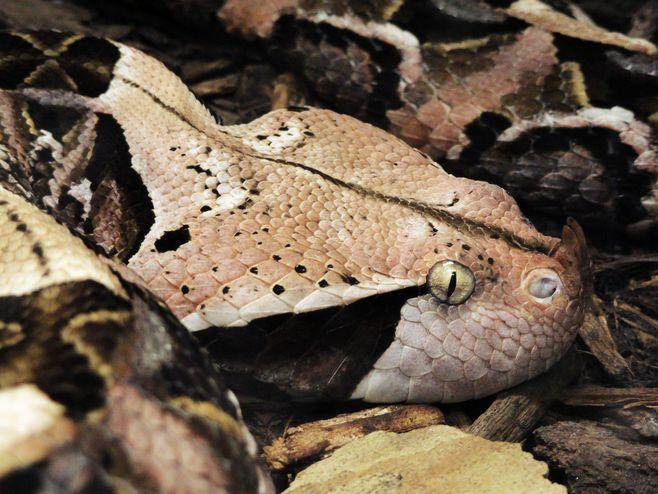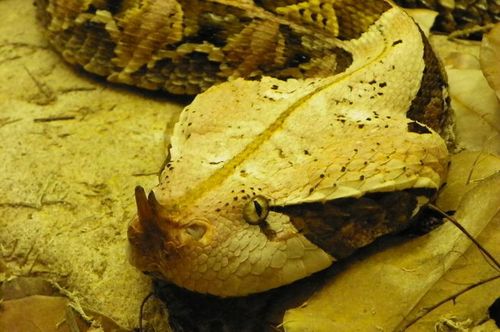
Understanding the Gaboon Viper Bite
The Gaboon viper, scientifically known as Bitis gabonica, is one of the most venomous snakes in the world. Its bite can be devastating, and it’s crucial to understand the implications and treatment options if you ever encounter this creature. Let’s delve into the details of the Gaboon viper bite.
The Gaboon viper is native to central and western Africa, where it resides in dense forests, swamps, and marshes. It’s the largest venomous snake in Africa, with an average length of about 5.5 to 6.5 feet (1.7 to 2 meters). Its coloration ranges from dark brown to black, with yellow or white bands that can vary in size and pattern.
venom composition
The venom of the Gaboon viper is a complex mixture of toxins, including neurotoxins, hemotoxins, and myotoxins. These toxins can cause a range of symptoms, from localized tissue damage to systemic effects that can be life-threatening.
Neurotoxins are responsible for the paralysis of the respiratory muscles, which can lead to respiratory failure. Hemotoxins cause blood clotting disorders, leading to hemorrhaging and shock. Myotoxins, on the other hand, damage muscle tissue, causing severe pain and muscle necrosis.

symptoms of a Gaboon viper bite
The symptoms of a Gaboon viper bite can vary depending on the amount of venom injected, the size of the snake, and the individual’s immune response. Here are some common symptoms:
-
Immediate pain at the bite site
-
Swelling and bruising around the bite
-
Severe bleeding from the bite
-
Difficulty breathing

-
Severe muscle pain and spasms
-
Confusion and disorientation
-
Loss of consciousness
diagnosis and treatment
If you suspect a Gaboon viper bite, seek medical attention immediately. The diagnosis is typically based on the clinical presentation and the history of the bite. Treatment involves several steps:
-
Wound care: Clean the wound with soap and water and apply a pressure bandage to reduce venom spread.
-
Antivenom: Antivenom is the most effective treatment for a Gaboon viper bite. It neutralizes the venom and prevents further damage. It’s crucial to receive antivenom as soon as possible after the bite.
-
Supportive care: This may include pain management, intravenous fluids, and respiratory support if needed.
prognosis
The prognosis for a Gaboon viper bite depends on several factors, including the amount of venom injected, the speed of treatment, and the individual’s overall health. With prompt and appropriate treatment, the survival rate is relatively high. However, without treatment, the mortality rate can be as high as 25-30%.
It’s important to note that the Gaboon viper is not an aggressive snake and will only bite when threatened. To avoid a bite, it’s best to keep your distance and avoid disturbing the snake in its natural habitat.
venom composition table
| Component | Function |
|---|---|
| Neurotoxins | Paralyze respiratory muscles |
| Hemotoxins | Disrupt blood clotting, leading to hemorrhaging and shock |
| Myotoxins | Damage muscle tissue, causing severe pain and muscle necrosis |
Understanding the Gaboon viper bite is essential for anyone living or traveling in its native habitat. By being aware of the symptoms, treatment options, and prevention strategies, you can minimize the risk of a potentially life-threatening encounter.







